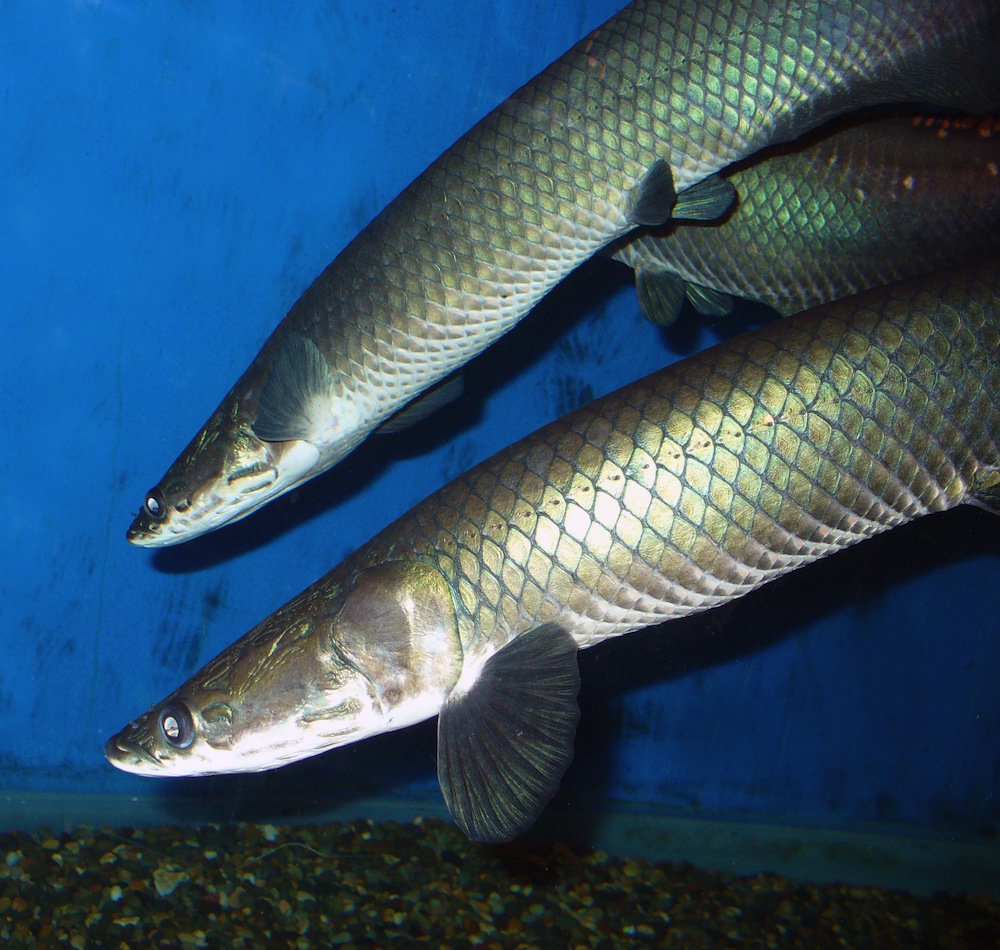
Giant Amazon Fish Species Discovered

A new type of giant Amazonian fish — one for which only a single species was known for more than a century — has been discovered in Brazil, scientists say.
The fish is a new species of arapaima, which are huge freshwater fish native to the Amazon River in Brazil. The discovery suggests there may be important new conservation issues to consider, particularly with regards to overfishing and the region's expanding fish farming industry.
"Everybody for 160 years had been saying there's only one kind of arapaima," Donald Stewart, a professor in the department of environmental and forest biology at the State University of New York in Syracuse, said in a statement. "But we know now there are various species, including some not previously recognized. Each of these unstudied giant fishes needs conservation assessment."
Arapaima are one of the most important commercial fishes in the Amazon, but their diversity has long been overlooked, Stewart said. [Photos of the Largest Fish on Earth]
In the mid-1800s, four species of arapaima were recognized. Then, in 1868, Albert Günther, a scientist at the British Museum of Natural History, published an opinion piece that lumped all arapaima into one species: Arapaima gigas. Günther's views eventually became the commonly accepted classification.
Stewart sifted through 19th-century scientific literature and studied original specimens that had been preserved at the National Museum of Natural History in Paris, and found that all four of the species originally described in the mid-1800s were distinct.
The new discovery means there are now five known species of arapaima. The fifth species was collected in 2001, and was found close to where the Solimões and Purus rivers link up in Brazil. The newly identified species, known scientifically as A. leptosome, has several distinguishing features, such as an elongated sensory cavity on the head, a sheath that covers part of the dorsal fin and a distinctive color pattern.
Sign up for the Live Science daily newsletter now
Get the world’s most fascinating discoveries delivered straight to your inbox.
Understanding the different species of arapaima is important for maintaining the health of the fish and the broader Amazonian ecology. Failure to address these differences could have far-reaching consequences, Stewart said.
"For example, there is a growing aquaculture industry for arapaima, so they are being moved about and stocked in ponds for rearing," he explained. "Eventually, pond-reared fishes escape and, once freed, the ecological effects are irreversible. A species that is endangered in its native habitat may become an invasive species in another habitat. The bottom line is that we shouldn't be moving these large, predatory fishes around until the species and their natural distributions are better known. Given the uncertainties, precaution is needed."
Arapaima populations in the Amazon Basin have also been affected by the lack of fishing regulations in the past century. "The likely impacts of this magnitude of overfishing on species diversity are not good," Stewart said.
The newly discovered fish species should have implications for conservation efforts in the Amazon Basin.
"If you're going to do conservation biology, you have to be sure about the taxonomy of the animals being studied," Stewart said. "If each study area has a different species, then results from one area should not be applied to manage populations in the next area."
The detailed findings of the study were published this month in the journal Copeia.
Follow Denise Chow on Twitter @denisechow. Follow LiveScience @livescience, Facebook & Google+. Original article on LiveScience.

Denise Chow was the assistant managing editor at Live Science before moving to NBC News as a science reporter, where she focuses on general science and climate change. Before joining the Live Science team in 2013, she spent two years as a staff writer for Space.com, writing about rocket launches and covering NASA's final three space shuttle missions. A Canadian transplant, Denise has a bachelor's degree from the University of Toronto, and a master's degree in journalism from New York University.










